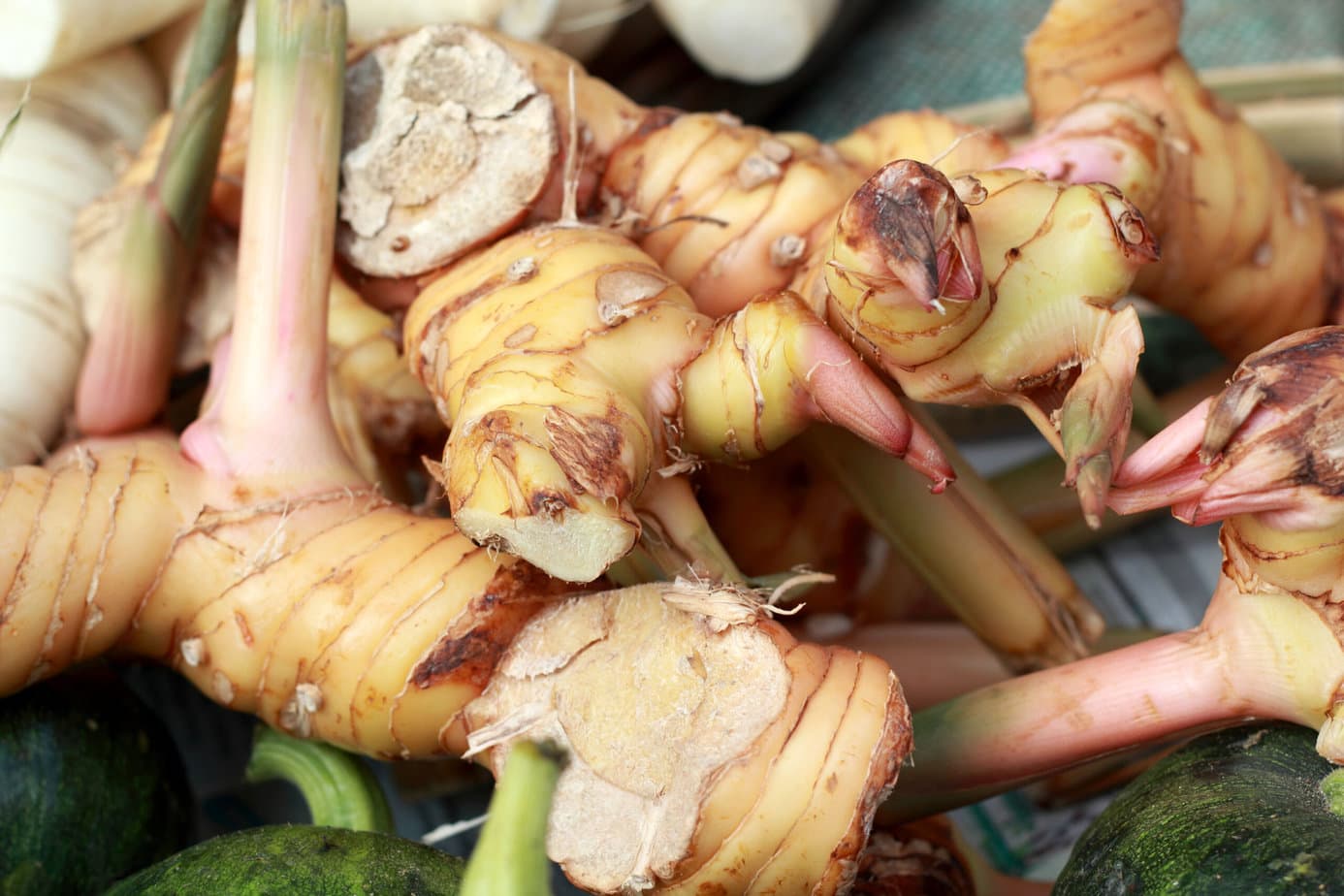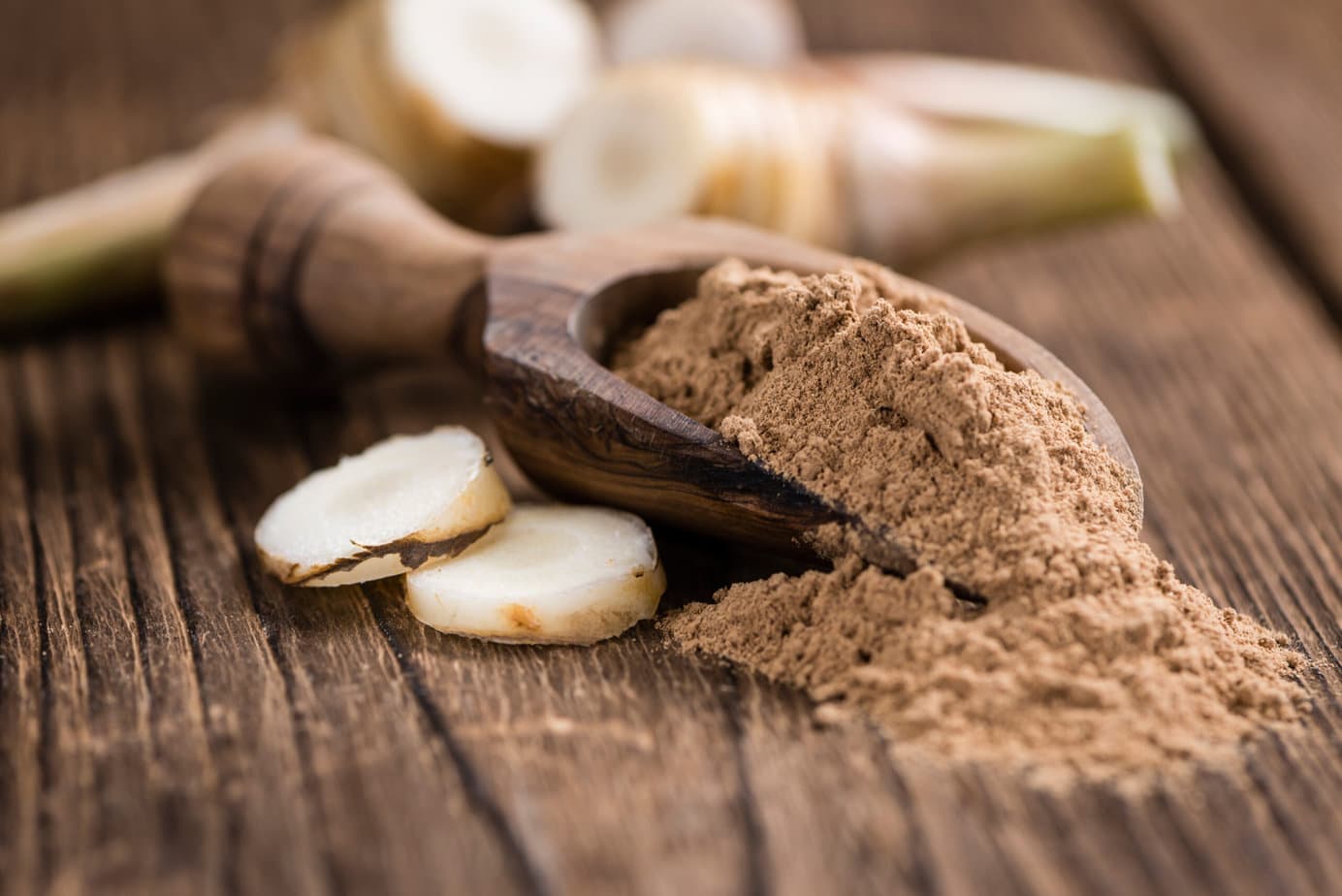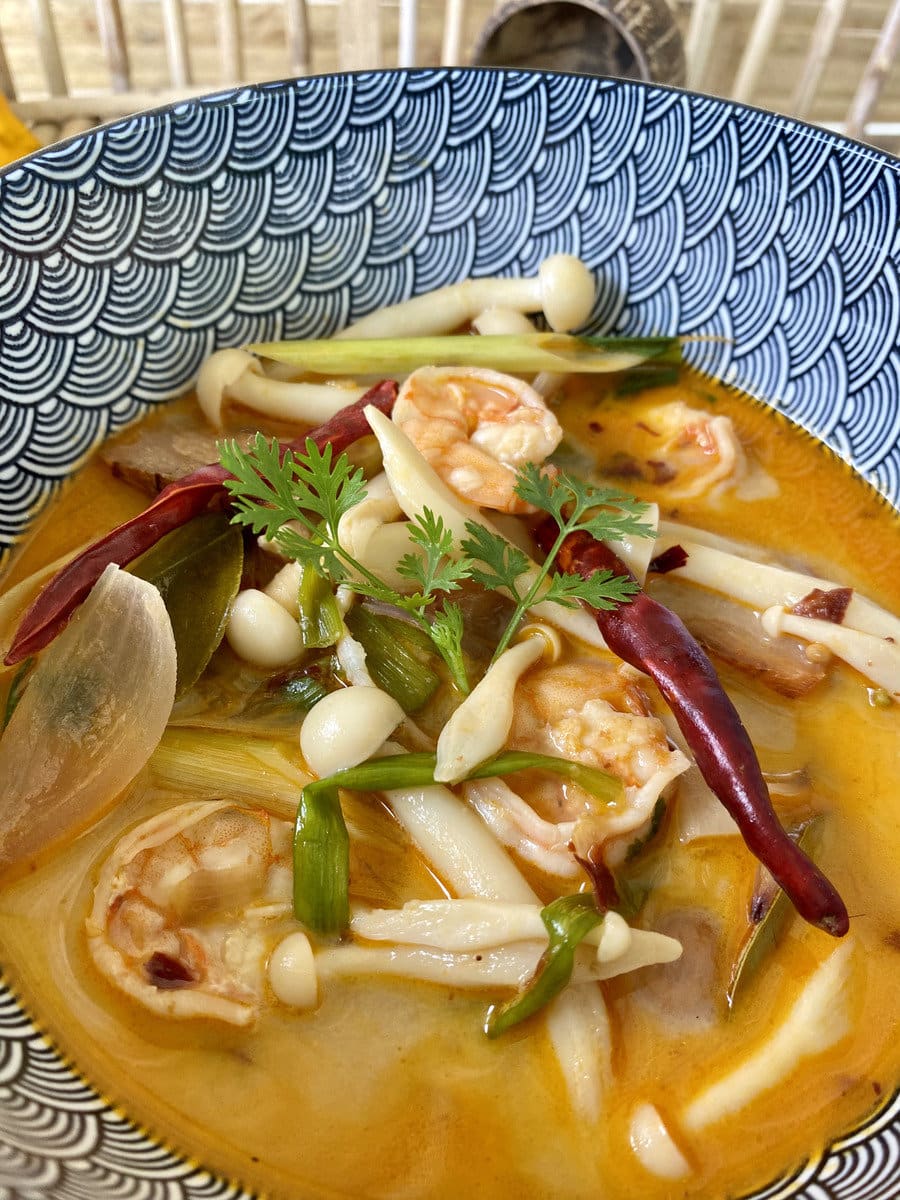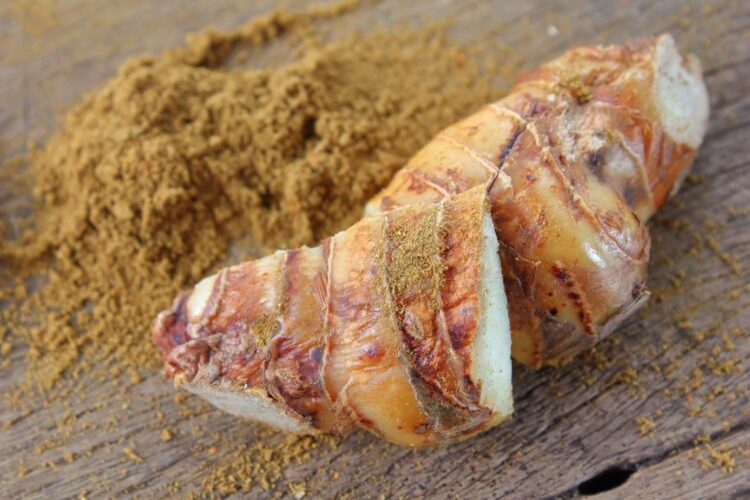Galangal, also called galanga, is the citrusy cousin of ginger. This aromatic rhizome is widely used in Asian, South Asian and Indian cooking and is especially popular in Indonesian cuisine and Thai cuisine.
It is peppery and spicy, with a hint of pine. Although harder to find than ginger, galangal is well worth seeking out and can be purchased dried, powdered or fresh.
What Is Galangal?

Although mainly used as a spice and flavouring, galangal is a rhizome, an underground stem that sends out shoots to generate new growth.
It belongs to the Zingiberaceae, or ginger, family and resembles ginger, with thin skin and tubular offshoots that branch into nodes.
While ginger and galangal are similar and used in many of the same ways, galangal offers its own nuances. It features in the cuisines of many countries, including Cambodia, Thailand, Indonesia, Malaysia, Vietnam, Singapore and Laos.
The Different Varieties of Galangal
Three main varieties are commonly referred to as lesser galangal, greater galangal and light galangal.
Native to China, lesser galangal delivers a sharper pepperiness and higher acidity than the other types.

Greater galangal is a taller plant that grows in Indonesia, particularly on the island of Java, and has a milder flavour. It is used, for example, in beef rendang.
Light galangal originates from the eastern archipelago of south-eastern India and is the closest of the three to true ginger in flavour. Of the three varieties, lesser galangal is the most common and the easiest to source.

Galangal or Ginger: What’s the Difference?
It is easy to see why ginger and galangal are often confused. Not only do they look almost identical, but galangal is frequently called Thai or Siamese ginger.
Although both are rhizomes from the same family, each brings its own flavour profile. True ginger is spicy and earthy, with a touch of sweetness and noticeable moisture in its fibres.
Galangal, by contrast, leans toward pine and citrus notes and is denser and drier. Both rhizomes can be dehydrated and ground into powder, and both should be peeled when fresh. You will sometimes see recipes that call for galangal but offer ginger as a substitute.
Fresh Galangal or Dried Galangal

Fresh galangal is generally more flavourful, allowing its peppery notes to shine. Dried or powdered galangal can also be used, but many of the subtleties that make this spice special are lost during processing.
Whenever possible, seek out fresh galangal.
What Does Galangal Taste Like?
Although galangal resembles common ginger, its flavour is less hot and more peppery.
The rhizome also carries a citrus note that pairs well with lemongrass and fresh fruit. This citrusy facet gives galangal a subtle, fresh pine taste that is evident in both its flavour and aroma.
Cooking with Galangal
When cooking with galangal, treat it much like ginger. Fresh galangal should be peeled with a spoon or paring knife.
Mince or thinly slice the fresh root, as it is dense and low in moisture. Grating works best, after which it can be stirred into sauces, marinades such as those for satay chicken skewers, curries, stir-fries and soups like tom kha soup.

Dried or powdered galangal is also available and can simply be measured with a teaspoon. Because the spice is potent, use it sparingly.
Remember that dried galangal is generally less powerful than fresh, so adjust quantities accordingly.
How to Substitute Galangal?
Ginger is the best substitute for galangal, but begin with a ginger-to-galangal ratio of three or four to one.
Use fresh ginger in place of fresh galangal and ground ginger in place of powdered galangal. A squeeze of lemon juice can help mimic galangal’s citrus notes.

Where to Buy Galangal
The best place to buy galangal is at an Asian supermarket, especially one that specialises in South-East Asian ingredients. It is not commonly used in European cooking and is often missing from the spice aisles of major supermarkets.
Some small specialist shops sell it in powdered form, either in bags or jars, but fresh galangal is rare.
When buying fresh galangal, which is usually sold by the kilo either loose or pre-packed, look for pieces that are plump rather than dry and free from blemishes or mould.
Galangal can also be bought online. In addition to fresh roots, you will find it sliced and dried, powdered, or dried in strips.
How to Store Galangal?
Store dried galangal in a cool, dark pantry in an airtight container.
Ensure no moisture gets into the container, otherwise the rhizome may mould.
Fresh, unpeeled galangal will keep for a few weeks in the vegetable drawer of the fridge. Once peeled, it will last about a week and should be well wrapped and kept away from light to prevent it from drying out.

